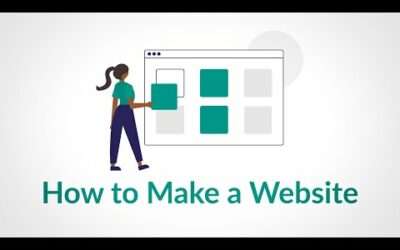
In today’s digital world, having a website is no longer optional—it’s essential. Whether you’re a business owner, a freelancer, or someone with a passion project, a website serves as your online identity. But how do you go about creating one? If you think website creation is only for tech-savvy professionals, think again! With the right tools and guidance, anyone can build a stunning and functional website. Here’s how to get started.
1. Define Your Purpose
Before diving into the technical details, it’s essential to clarify the purpose of your website.
- Are you creating an online store?
- Do you need a portfolio to showcase your work?
- Are you starting a blog to share your ideas?
Knowing your purpose will help shape the design, content, and functionality of your site.
2. Choose the Right Platform
One of the easiest ways to build a website is by using a Content Management System (CMS) like WordPress. Here’s why WordPress is a popular choice:
- User-Friendly: It’s easy to use, even for beginners.
- Customizable: Thousands of themes and plugins allow you to tailor your site to your needs.
- Scalable: Whether you’re starting small or aiming big, WordPress grows with you.
Other options include Wix, Squarespace, and Shopify (if you’re focusing on e-commerce).
3. Get a Domain and Hosting
Your domain is your website’s address (e.g., www.yoursite.com), and hosting is the server where your website lives. Many hosting providers like Bluehost, SiteGround, or HostGator offer affordable packages, often including a free domain for the first year.
4. Pick a Theme and Customize It
WordPress offers a wide range of free and premium themes. Choose one that aligns with your website’s purpose.
- For blogs: Look for themes with a clean, reader-friendly design.
- For portfolios: Opt for a visually striking layout.
- For e-commerce: Explore themes optimized for online stores, like those compatible with WooCommerce.
Once you’ve chosen a theme, use WordPress’s built-in customizer to tweak colors, fonts, and layouts to match your brand.
5. Add Essential Pages
Most websites require a few core pages:
- Home Page: The first impression visitors get. Make it engaging and informative.
- About Page: Share your story and build trust with your audience.
- Contact Page: Make it easy for visitors to get in touch.
- Products/Services Page: Showcase what you offer.
- Blog: If content is a focus, include a blog to share updates and insights.
6. Install Plugins
Plugins extend your website’s functionality. Here are some must-haves:
- Yoast SEO: Optimize your site for search engines.
- Elementor: Build pages with drag-and-drop ease.
- WooCommerce: If you’re running an online store.
- WPForms: Create contact forms without coding.
7. Optimize for Mobile
More than half of web traffic comes from mobile devices. Ensure your site is responsive and looks great on all screen sizes. Most modern themes are mobile-friendly, but always double-check.
8. Focus on Content
Your website’s content is what keeps visitors coming back. Make it:
- Clear and Concise: Communicate your message effectively.
- Engaging: Use images, videos, and compelling headlines.
- SEO-Friendly: Use keywords strategically to rank higher on search engines.
9. Test and Launch
Before going live, test your website thoroughly:
- Check all links and buttons.
- Ensure it loads quickly.
- Test its appearance on different devices and browsers.
Once everything looks good, hit the “Publish” button!
10. Keep Improving
A website is never “finished.” Regular updates keep it fresh and relevant. Monitor performance, add new content, and adapt to feedback from visitors.
Creating a website is a rewarding journey. With platforms like WordPress and an array of user-friendly tools, it’s easier than ever to establish your online presence. Whether you’re building a personal blog, a professional portfolio, or a business website, the possibilities are endless.
Comments are closed